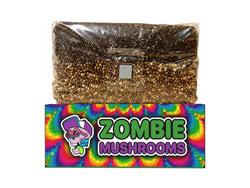- A study from 2019 indicated individuals with significant childhood trauma histories showed improved responses to ketamine therapy.
- Ketamine acts on the brain's glutamate system to promote neuroplasticity and the development of synapses.
- During ketamine sessions, thernner.apeutic dissociation can assist individuals in revisiting trauma in a secure ma
- Neuroplasticity, encouraged by ketamine therapy, has the potential to reshape emotional reactions to prior trauma.
- Professionals emphasize that ketamine is most beneficial when used within a complete therapy approach that acknowledges trauma.
Unresolved trauma from childhood can persist for many years. It can shape emotional patterns and mental health issues throughout adulthood. While typical therapy helps many survivors make progress, an increasing number seek deeper healing when standard methods are not enough. Ketamine therapy is becoming known as a hopeful, science-supported method, especially for individuals grappling with childhood trauma, depression that resists treatment, and anxiety disorders. This is because it utilizes neuroplasticity and provides a unique mental reset.
The Impact of Childhood Trauma
Childhood trauma is more than just a painful memory. It creates a lasting effect on both the brain and body. Childhood trauma happens during crucial phases of brain development and can include
- Physical or sexual abuse
- Emotional neglect
- Exposure to domestic violence
- Loss of a caregiver
- Living with a parent who has mental illness or addiction
These situations overwhelm a child’s feeling of safety. They flood the nervous system with stress hormones such as cortisol and adrenaline. Consistent exposure to this kind of stress can hinder brain development, particularly in areas responsible for emotional control, learning, memory, and threat perception.
Long-Term Impacts of Childhood Trauma
Adults who went through considerable trauma in childhood may experience
- Generalized anxiety or panic disorders: Constant hypervigilance becomes an ingrained state.
- Major depressive disorder (MDD): A pessimistic or negative view of oneself and the world.
- Post-Traumatic Stress Disorder (PTSD): Recurring intrusive memories, avoidance behaviors, and nervous system dysregulation.
- Emotional dysregulation: Intense anger, sadness, or dissociation as typical responses.
Childhood trauma is connected to physical illnesses like heart disease, autoimmune problems, and chronic pain, in addition to mental health challenges. According to the CDC-Kaiser ACE (Adverse Childhood Experiences) Study, the more ACEs a person has, the greater their chance of experiencing both physical and mental health issues.
Typical Ways to Treat Trauma
Standard treatment for trauma usually involves a combination of psychotherapy, medication, and lifestyle changes.
Psychotherapy Options
- Cognitive Behavioral Therapy (CBT): This teaches people to recognize and change unhelpful thinking patterns with more helpful ones.
- Eye Movement Desensitization and Reprocessing (EMDR): This approach uses bilateral stimulation to aid the brain in reprocessing trauma.
- Trauma-Focused Cognitive Behavioral Therapy (TF-CBT): This is specifically designed for children or adults working through early trauma.
Pharmacological Treatments
Selective serotonin reuptake inhibitors (SSRIs) like Prozac or Zoloft are often prescribed for depression and anxiety. Mood stabilizers and antipsychotics might also be considered based on the specific symptoms. However, many of these medications primarily focus on reducing symptoms, not resolving the underlying causes.
For some, these treatments are effective. However, others develop treatment-resistant depression (TRD). This is a condition where symptoms continue despite multiple medication trials and ongoing therapy.
This is where ketamine therapy becomes relevant.
Ketamine Therapy as a Significant Tool
Ketamine was first used as a surgical anesthetic, and its effects on mood were found by chance. In recent years, it has become recognized for its rapid relief of depression and anxiety symptoms.
Unlike SSRIs, which can take 4–6 weeks to show results, ketamine's antidepressant effects can start within hours after just one dose. Furthermore, it shows promise for
- Treatment-resistant depression
- Suicidal thoughts
- Post-traumatic stress disorder
- Severe anxiety and dissociation
Ketamine functions in a different way from typical antidepressants. It offers not only symptom relief but also a neurological state that supports emotional reintegration and personal progress.

How Ketamine Operates in the Brain
Ketamine does not work on the serotonin system. Instead, it affects the glutamatergic system, particularly the NMDA (N-methyl-D-aspartate) receptor. This receptor plays a role in synaptic plasticity and neurogenesis.
Key Mechanisms
- Synaptogenesis: It encourages the regrowth and repair of neural pathways that are disrupted or reduced because of trauma.
- Neuroplasticity: It boosts the brain's capacity to create new connections and change old patterns of behavior.
- Functional connectivity: It improves communication between the prefrontal cortex (logic) and amygdala (emotion/fear center).
This rebalancing supports emotional strength and provides an ideal context for therapy.
The Benefit of the Dissociative State
At therapeutic doses, ketamine causes a mild dissociative state. This is a temporary feeling of being detached from the body, ego, and typical sense of time or self.
Why This Is Important for Trauma Recovery
Dissociation might seem negative, but when it is guided and intentional, it can
- Create emotional distance from traumatic memories
- Lessen fear and anxiety associated with past events
- Allow reprocessing of harmful events in a different way
- Support insight, greater self-awareness, and spiritual breakthroughs
Individuals often describe this state as expansive, insightful, or even mystical. It allows them to view their situation with new, compassionate understanding.

Why Ketamine May Be Especially Suitable for Trauma Survivors
A significant study in 2019 by O'Brien et al. studied how individuals with a history of childhood maltreatment responded to ketamine. The findings were striking: those with higher levels of trauma experienced greater improvements in mood and mental health from treatment.
Implications of These Findings
- Brain wiring affected by trauma may be particularly responsive to ketamine's neuroplastic benefits.
- Ketamine might assist in “resetting” fear and reactivity circuits that have become overly sensitive.
- Individuals with trauma histories may require different approaches compared to standard antidepressant treatments.
This suggests that trauma is not only a psychological issue; it is also biological. And treatments that target biology, such as ketamine, can produce significant changes.
What to Anticipate During a Ketamine-Assisted Therapy Session
Ketamine therapy usually happens in a clinical setting and follows a set procedure.
Key Components
-
Administration methods
- Intravenous (IV) infusion — most precise
- Intramuscular (IM) injection
- Sublingual lozenges for use at home (under supervision)
-
Setting: A peaceful, dimly lit room, often with music, eye masks, and supportive staff.
-
Duration: A session usually lasts 45–90 minutes.
-
Support Role: A psychedelic therapist or mental health professional offers support either during or soon after the session.
The Experience
Individuals might report
- A sensation of “floating” or separation from ego
- Vivid inner visuals or symbolic imagery
- Revisiting a traumatic memory from a safe distance
- A feeling of emotional release or catharsis
This experience is often followed by a strong sense of clarity, peace, or purpose.

Emotional & Psychological Benefits
Beyond immediate mood improvements, ketamine therapy can encourage longer-term psychological progress, including
- Reduced symptoms of anxiety and panic attacks
- Improved sleep and appetite
- More stable emotional reactions
- Increased willingness to engage in therapy or relational vulnerability
It also tends to lessen rumination, allowing trauma survivors to break away from repetitive, negative internal thoughts.

Ketamine and the Function of Neuroplasticity in Healing
When trauma has “wired” your brain in a certain way, your inner world can become rigid. It favors patterns of fear, avoidance, or dissociation. Ketamine brings back flexibility during a limited period of increased plasticity.
Neuroplasticity Supports
- Reinterpreting past events without being overwhelmed by emotion
- Developing healthier coping mechanisms
- Reconnecting with experiences in the present moment
- Decreased reliance on defensive strategies like withdrawal, anger, or people-pleasing
The important thing is to combine this plastic state with integration methods that strengthen new ways of thinking, relating, and being.
Integration and Work After Therapy
The hours and days after a ketamine session are full of potential for change, but only if intentional practices are used.
Effective Integration Strategies
- Journaling: Record insights, memories, or visions right after the session.
- Talk therapy: This helps to fit the experience into a meaningful life story.
- Body-centered modalities: Yoga, massage, and trauma-informed somatics help reconnect the body and mind.
- Microdosing (optional): Some consider using very small amounts of psilocybin or adaptogenic mushrooms.
- Support groups: Healing happens in community, especially for those with developmental trauma.
Integration is what changes a chemical experience into lasting growth.

Safety, Side Effects, and Regulation
Although ketamine is FDA-approved for specific uses, its use in mental health is not officially approved and should be approached with care.
Common Side Effects
- Nausea or dizziness
- Increased heart rate or blood pressure
- Temporary confusion or mild hallucinations
- Dissociation (intended and managed in therapy)
Who Should Avoid It?
Ketamine therapy might not be appropriate for
- Individuals with current substance use disorders
- Those with uncontrolled heart problems
- People at risk for psychotic episodes or schizophrenia
- Anyone unprepared for altered states of consciousness
Always check with a psychiatrist or specialized clinic before starting treatment.

Ketamine Is a Tool, Not a Complete Cure
It is important to understand that ketamine is not a quick fix for trauma.
Healing requires
- Continued support from mental health professionals
- Safely revisiting and reprocessing early memories
- Dedication to self-awareness practices
- Time and consistency
However, for many trauma survivors, it is the tool that finally removes the obstacle to deeper healing.
New Areas: Psychedelics, Mycology, and Brain Health
Ketamine is part of a wider movement in psychotherapy assisted by psychedelics. Substances like psilocybin (the active ingredient in “magic mushrooms”) are leading research in trauma treatment.
These substances
- Broaden consciousness
- Open up emotional pathways
- Provide a spiritual context for our traumas
- Access the natural healing ability of the body and mind
Interestingly, both ketamine and psilocybin seem to reflect the healing ability found in mycology. Mushrooms themselves show regeneration, recycling, and symbiosis, which are powerful examples for the trauma healing process.

How to Consider Ketamine Therapy Safely & Responsibly
If ketamine therapy feels like the right option for you, think about these steps
- Select a respected clinic with licensed professionals.
- Find providers with training that recognizes trauma and is specific to psychedelics.
- Clarify what integration services are offered beforehand.
- Confirm that emergency procedures are in place.
- Be informed, not impulsive. Personal research and informed consent are essential.
The Healing Process Is Unique
No two trauma stories are exactly the same. Similarly, no two healing processes are identical. Ketamine therapy is more than just reducing symptoms. It is about returning to yourself, with renewed strength and understanding.
If you have been carrying childhood trauma for many years, and standard approaches have not helped you move forward, ketamine might offer that missing element: a spark of neuroplastic hope and clear emotional insight.
You are not irreparably damaged. Your brain can still develop. And your story is still ongoing.




